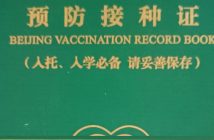
Last summer we came back from the UK laden down with sweet treats, new clothes, toys, and plenty of medicines. We also came back with nits, aka head lice. Head lice are tiny wingless insects that live in human hair. They are common, particularly in children, and boy do they make you itch! Grey-brown in color, they are the size of a pinhead when hatched, and of a sesame seed when fully grown.
They cannot fly, jump or swim and are spread by head-to-head contact, climbing from the hair of an infected person to the hair of someone else. Head lice are not the result of dirty hair or poor hygiene, as they can affect all types of hair, irrespective of its condition and length. The tiny critters feed by biting the scalp and feeding on blood. They take 6-10 days to become fully grown and once mature, a head louse can crawl from head to head. So to break the cycle, and stop them spreading, they need to be removed within seven days of hatching. Head lice can be treated effectively using medicated lotions or by wet combing, using a specially designed head lice comb.

I made a mad dash to one of the pharmacies at an international hospital, where the poor girl behind the counter looked terrified when I started mimicking an itchy head and showing her the word insect on my Google translate. I couldn’t find the word for nits. The shampoo I took home just wasn’t effective. Luckily, my friend was still at London Heathrow airport when I sent her a frantic text requesting Hedrin lotion. Within a few days, we were lice free, and they have not made a re-appearance since.

This summer’s unexpected gift from the UK was chickenpox, medically known as varicella. My 5 year old already had chickenpox when he was 18 months old.In the UK it is such a common childhood illness that 90% of adults are immune to it. Once you have had chickenpox, you usually develop antibodies to the infection and become immune to catching it again. I remember when I started school and a class mate got chickenpox. Every parent was trying to force their kid to play with the “infected one”, so that they could get the pox and be done with it.

For my son to have contracted it again, means that the infection he had when he was a baby was mild, and therefore not enough for him to build immunity.The symptoms are a rash of red, incredibly itchy spots (we thought the nits were bad enough) that turn into fluid-filled blisters. They then crust over to form scabs, which eventually drop off. There is no specific treatment, but there are pharmacy remedies which can alleviate symptoms, the most effective being calamine lotion to ease the itching. There is a chickenpox vaccine, but it is not part of the routine childhood vaccination schedule in the UK. For this reason, I didn’t opt for the vaccine for either of my children. In Beijing there is a locally produced vaccine available.
So off we headed to the doctor, to confirm diagnosis and pick up some calamine lotion. What I thought would be a quick appointment, turned into a form filling exercise. It turns out that in China you have to notify the government health body of all new cases of chickenpox. Oops. If you’re reading this, and your kids go to the same school as my “infected one”, don’t worry he won’t be infectious once fall term starts. In fact, he’s looking better already. I wonder what next summer’s trip will bring us.
beijingkids Shunyi Correspondent Sally Wilson moved to Beijing in 2010 from the UK with her husband and son. Her daughter was born here in 2011 and both her kids keep her happily busy. In her spare time, Sally loves to stroll through Beijing’s hutongs and parks. She is a (most of the time) keen runner and loves reading: books, magazines, news, and celeb websites – anything really. Sally is also a bit of a foodie and loves trying out new restaurants.
Photos: Direct Relief, Thisis Pegasus, Reeve14551, Dominic Sayers (Flickr)



